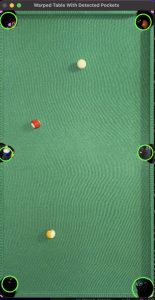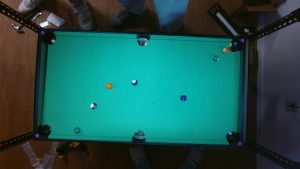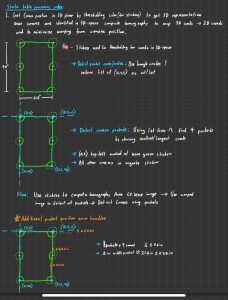This week, our team made significant progress in refining the camera and projector system, improving the physics simulation, and integrating the core components of our project in preparation for the interim demo.
Luke focused on optimizing the camera’s positioning and settings to improve image capture accuracy. He worked on integrating the camera with the CV algorithm to ensure reliable ball detection and reduce distortion. Additionally, he experimented with different mounting positions for both the camera and projector, addressing stability and visibility concerns. He also adjusted lighting conditions around the table to minimize shadows that interfered with ball detection.
Samuel completed the find_best_shot algorithm, transitioning from a brute-force approach to a more efficient simulated annealing method. This allows the system to find optimal shot angles, power, and spin within a set time constraint. However, due to the randomness of simulated annealing, the algorithm sometimes returns a local minimum rather than the best possible shot. To address this, he has begun rewriting the physics simulation in C++ to improve performance, reducing simulation time from 25ms to under 10ms. While this won’t be ready for the interim demo, he aims to have it completed for the final demo.
Kevin worked on ensuring accurate integration between ball/pocket coordinates and the physics simulation. He also focused on improving error handling for the CV system, particularly in mis-detected balls and pocket positions. Alongside Luke, he helped finalize the table setup, securing the projector mount and ensuring the camera is positioned correctly for accurate detection.
Our team’s next steps will be to finalize the system integration for the interim demo. Luke will continue to resolve the remaining camera system bugs and refining the UI to improve usability and game state visualization. Sammy will continue developing the C++ physics simulation. Kevin will continue to enhance the CV algorithm with ball detection and pocket detection.












